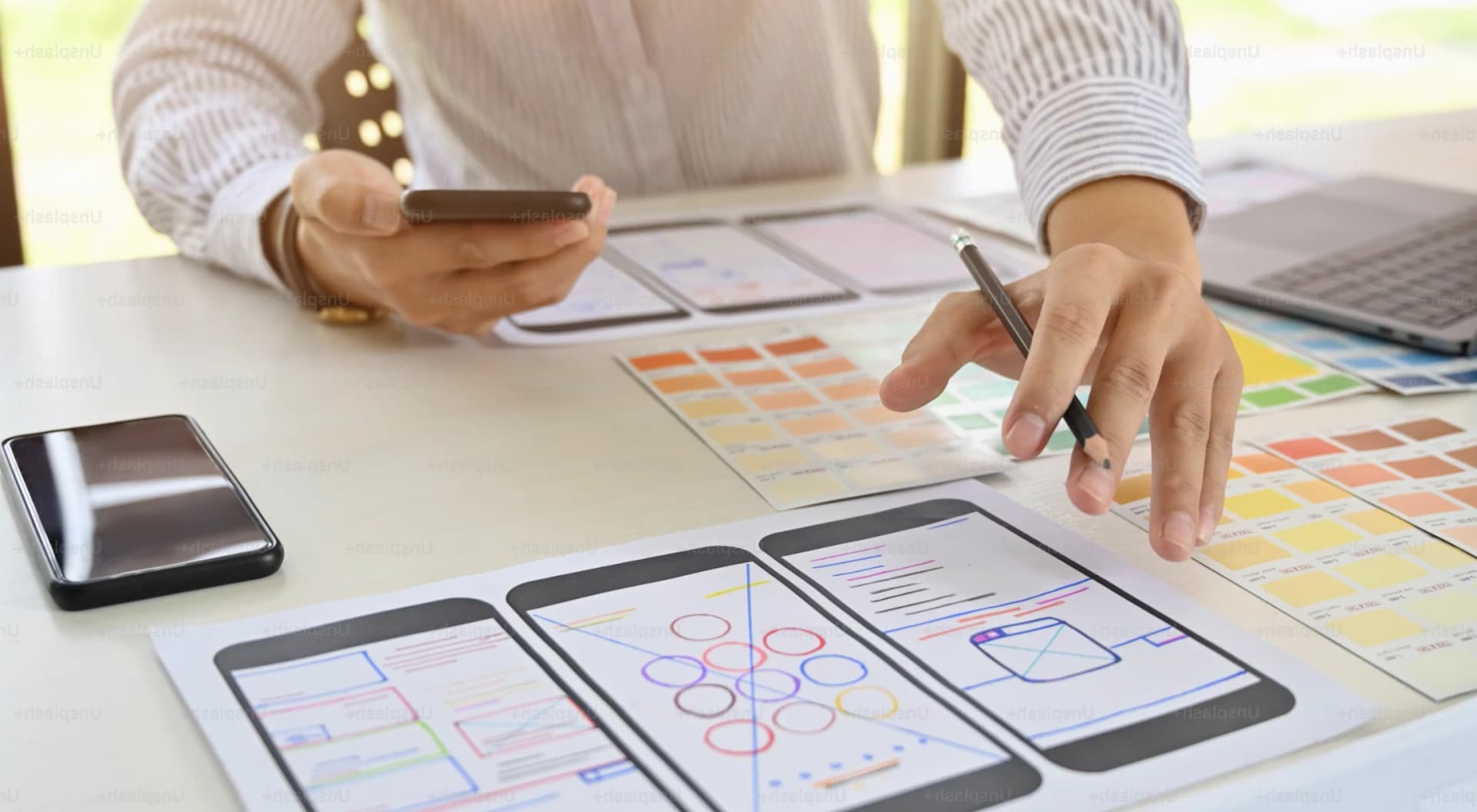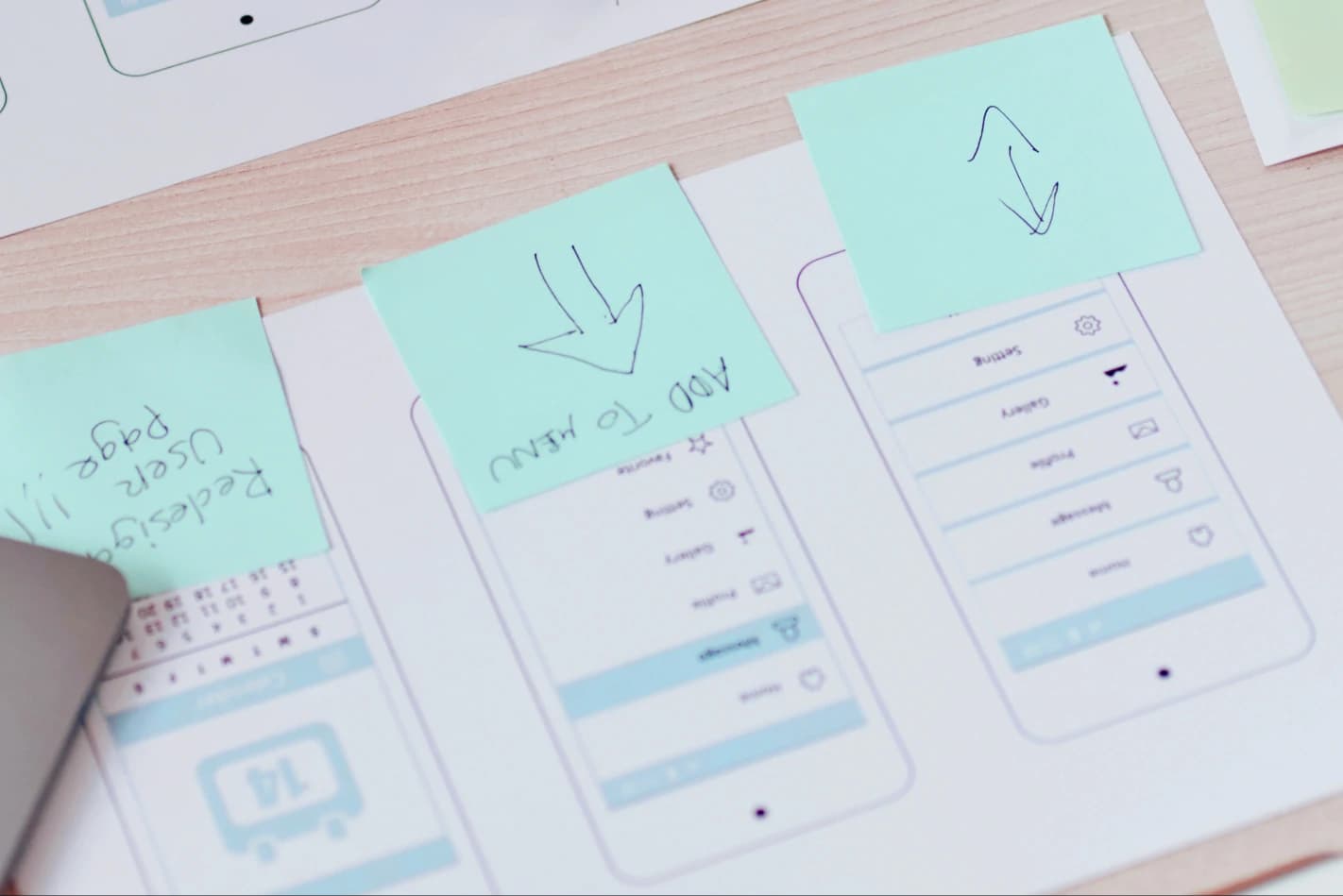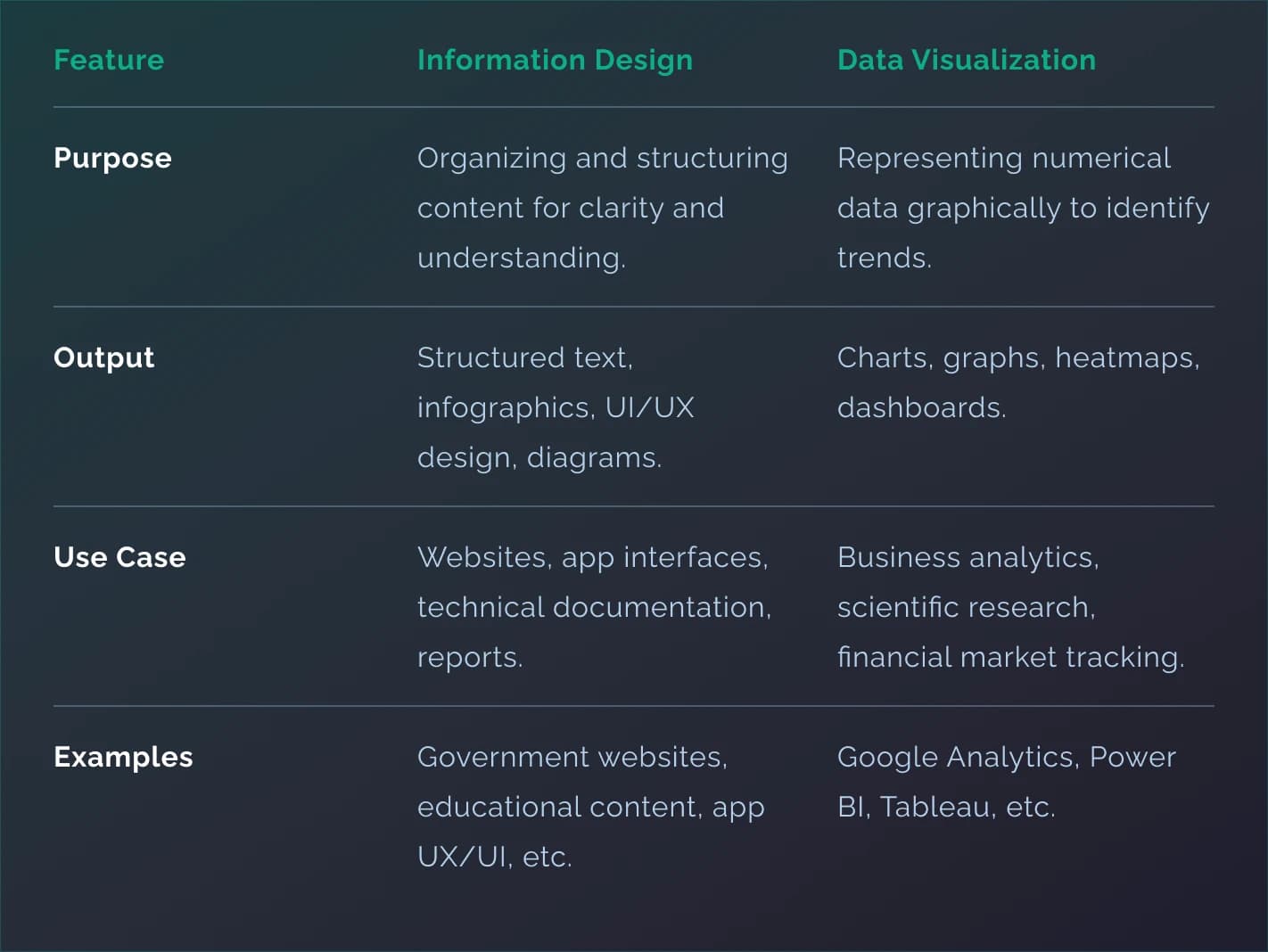Information Design in App Development and Its Importance in 2025

Old software could afford large, bulky, and complex interfaces without losing users — back then there was simply no competition. But today, app developers must prioritize information design to ensure usability, accessibility, and engagement. If they don’t, users will simply move on to another app.
In this article, you’ll learn what information design is, the benefits of good information design, and its role in shaping modern applications in 2025. Read on for expert insights from our team.
What Is Information Design In App Development?

The information design definition is the process of presenting complex data in a way that is easily understood and practical. It involves structuring text, images, and visual elements effectively to ensure a smooth user interaction.
There isn’t a one-size-fits-all approach to information design — each type of information design serves a different purpose depending on the context. However, the goal is to eliminate confusion and provide users with an intuitive journey through your application.
Key Elements of Information Design
Your UI/UX designs and software engineers must follow these key elements in their apps:
- Clarity – Ensuring content is clearly written and easy to understand.
- Hierarchy – Structuring important information first while maintaining logical navigation.
- Consistency – Using consistent colors, fonts, and interface elements.
- Accessibility – Designing for users of all abilities.
- Responsiveness – Ensuring adaptability across multiple screen sizes.
Applying these elements to your software will give you a competitive edge. However, this isn’t the only factor to consider — there are other essential principles as well.
Principles of Effective Information Design
Implementing the key elements of information design in your application requires you to apply several principles. They can be used as a step-by-step checklist for your project:
- Define the audience – Understanding the users’ needs and preferences.
- Keep the process simple – Avoiding unnecessary complexity in UI/UX.
- Use visualization – Implementing infographics, maps, and posters to enhance understanding.
- Address navigation issues – Creating intuitive menus and guides.
- Ensure data accuracy – Providing up-to-date and reliable data.
We recently covered the best data visualization examples in web app development. Check out the article to see how these principles are used in other projects.
Importance Of Information Design In App Development

If you’re wondering why information design matters, then we’ve got the answers. It’s the only way to build a user-friendly application that meets current expectations and stimulates retention. But there are also benefits to consider.
Enhancing Communication
Your app’s success depends on its ability to express the right message effectively. Using a user-centered approach by structuring text and content logically, your developers can reduce cognitive overload. This makes it easier for users to grasp important details.
Supporting Decision-Making
Well-structured information design helps users process data efficiently, leading to informed decisions. Whether it’s an e-commerce app or a financial platform, clearly presenting essential details guides users toward better choices.
Improving User Experience
Your UI/UX designers must prioritize intuitive interactions. Properly designed layouts, navigation systems, and visual cues significantly improve UX by reducing confusion and frustration. If the user experience is at a high level, then users will be ready to use the software regardless of the price.
Boosting Engagement
Users are more likely to interact with an app that presents information in an engaging way. Developers can maintain user engagement through interactive dashboards, dynamic infographics, and other elements that follow industry best practices.
Ensuring Accuracy and Credibility
Inaccurate data and misleading layouts can harm your app’s credibility. Ensuring reliable content and maintaining consistency in design builds trust and encourages continued use. Your application’s professional look must be supported by reliability and trustworthiness.
Examples Of Information Design

The importance of information design extends across multiple industries, shaping various digital experiences. Let’s take a closer look at the way it affects different niches.
Business and Marketing
Companies use structured reports and dashboards to make reliable decisions based on analytics. Tools like Google Analytics, HubSpot, and Tableau are perfect examples of visualized data using information design, making it easier for marketers to track user behavior, campaign performance, and trends.
Education and Training
E-learning platforms like Coursera, Udemy, and Duolingo rely heavily on information design to structure their courses efficiently. Interactive guides, step-by-step tutorials, and well-organized course modules help students process complex topics quickly. They also apply visual aids like video lectures, knowledge maps, and quizzes.
Technology and UX/UI
Successful applications like Airbnb and Spotify use optimized navigation, well-structured content, and visualization techniques to guide users through their platforms. They have a seamless UX/UI, which ensures users can find the information they need without frustration, increasing engagement and retention rates.
Public Services and Communication
Governments and public institutions apply information design to present policies, guidelines, and announcements in an accessible way. Examples of official websites include gov.uk and cdc.gov. They use well-structured layouts to communicate essential information accurately.
These platforms make sure that citizens can access and understand important information with ease by incorporating clear text, visual elements, and user-friendly navigation.
Healthcare and Scientific Communication
Information design helps organize patient records, medical reports, and research findings. EHR systems like Epic and Cerner use structured data presentation to improve accessibility for medical professionals.
Additionally, data visualization tools, like those used in medical diagnostics, allow doctors to interpret complex data accurately. In scientific research, platforms like PubMed and Nature implement information design techniques to make published studies more accessible.
Information Design vs. Data Visualization

While information design and data visualization share similarities, they serve different purposes. Information design focuses on structuring content logically for user understanding, while data visualization presents numerical data graphically to reveal patterns and insights.

Both are important in app development, ensuring users can interpret information efficiently. However, different types of information design are required depending on the platform, user expectations, and industry needs.
Summary
Information design is already a vital component of app development in 2025. Its fundamentals are used to improve the user experience, support decision-making, and improve retention. The benefits of good information design are undeniable.
If you’re looking for a reliable team to develop your software and integrate the best information design practices, Implex is your best option. With a team that brings decades of experience and a 5/5 rating on Clutch, our expertise will help you get a top-tier application that will rock the market. Interested? Let’s team up!



